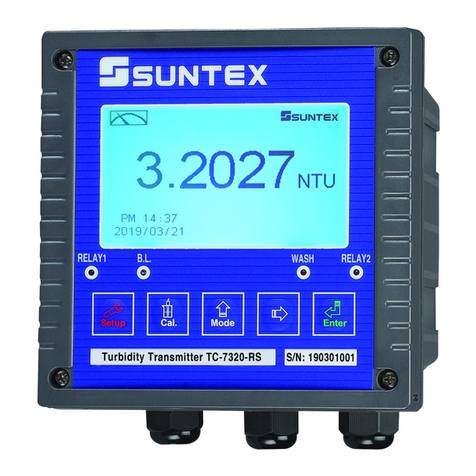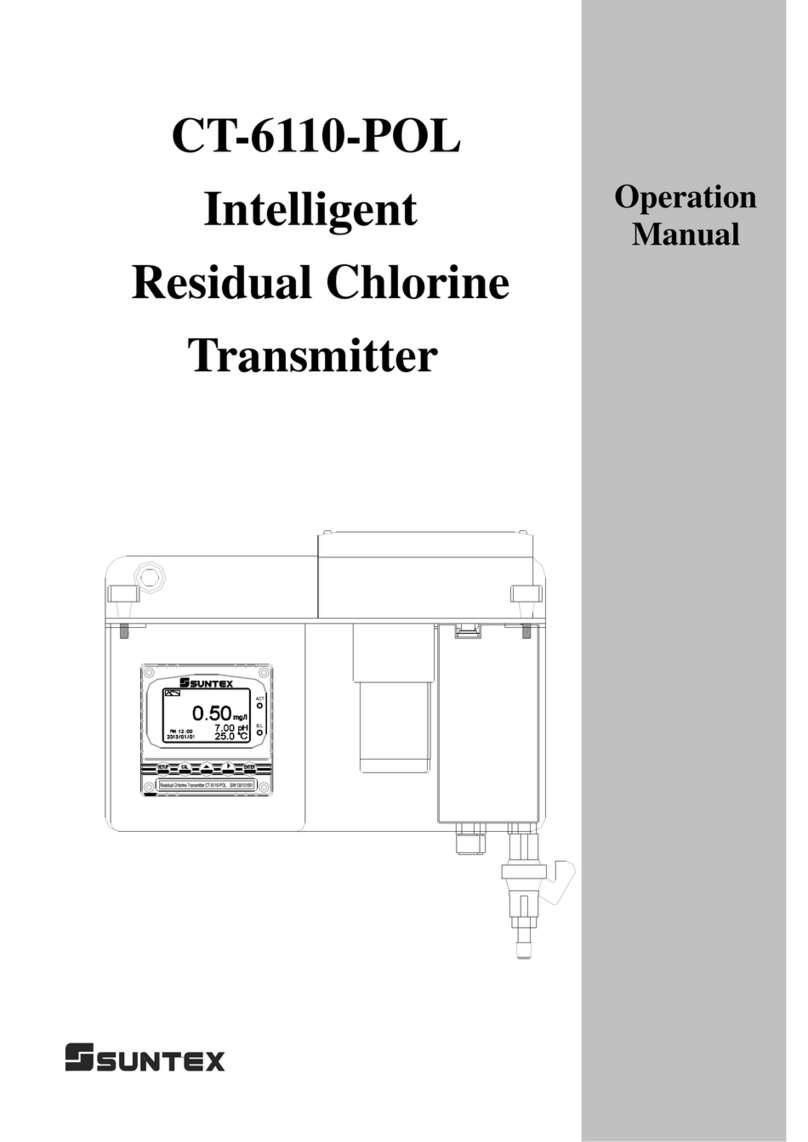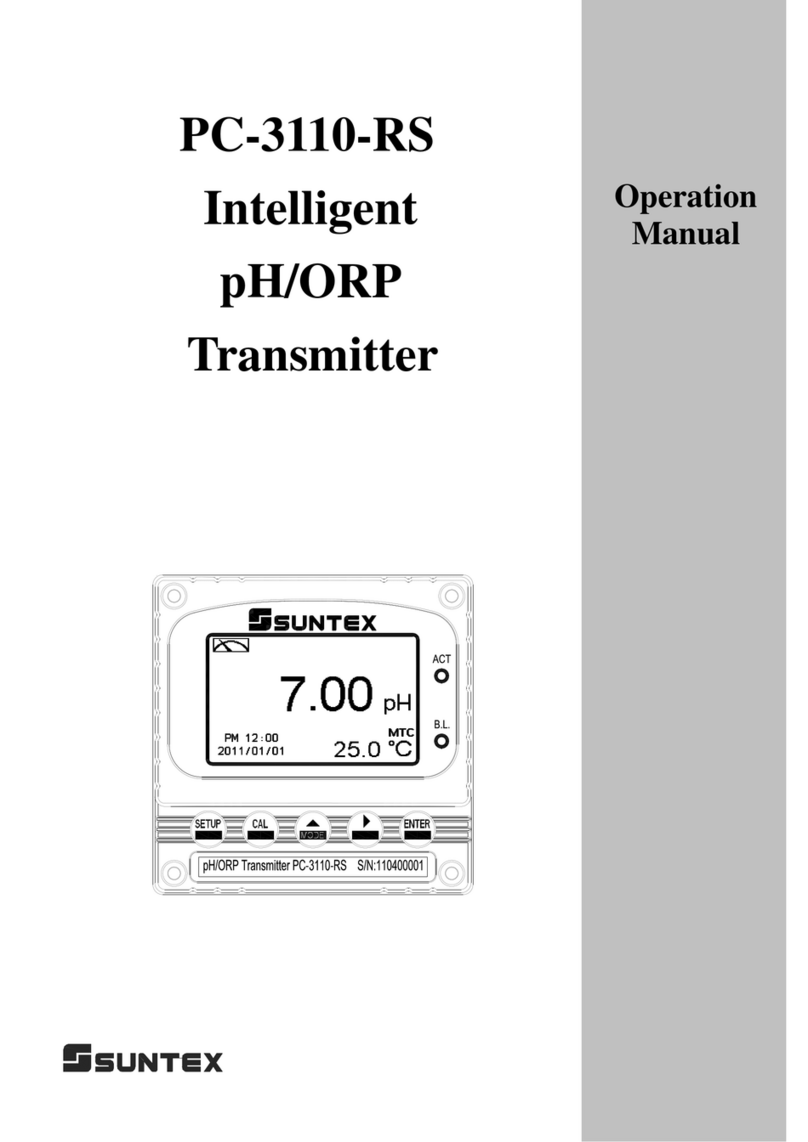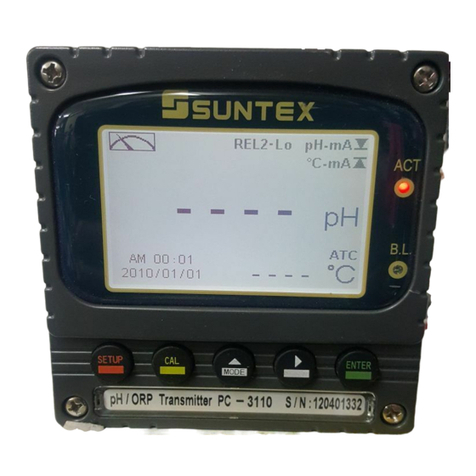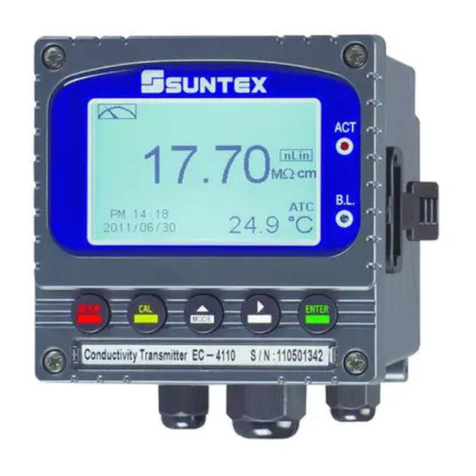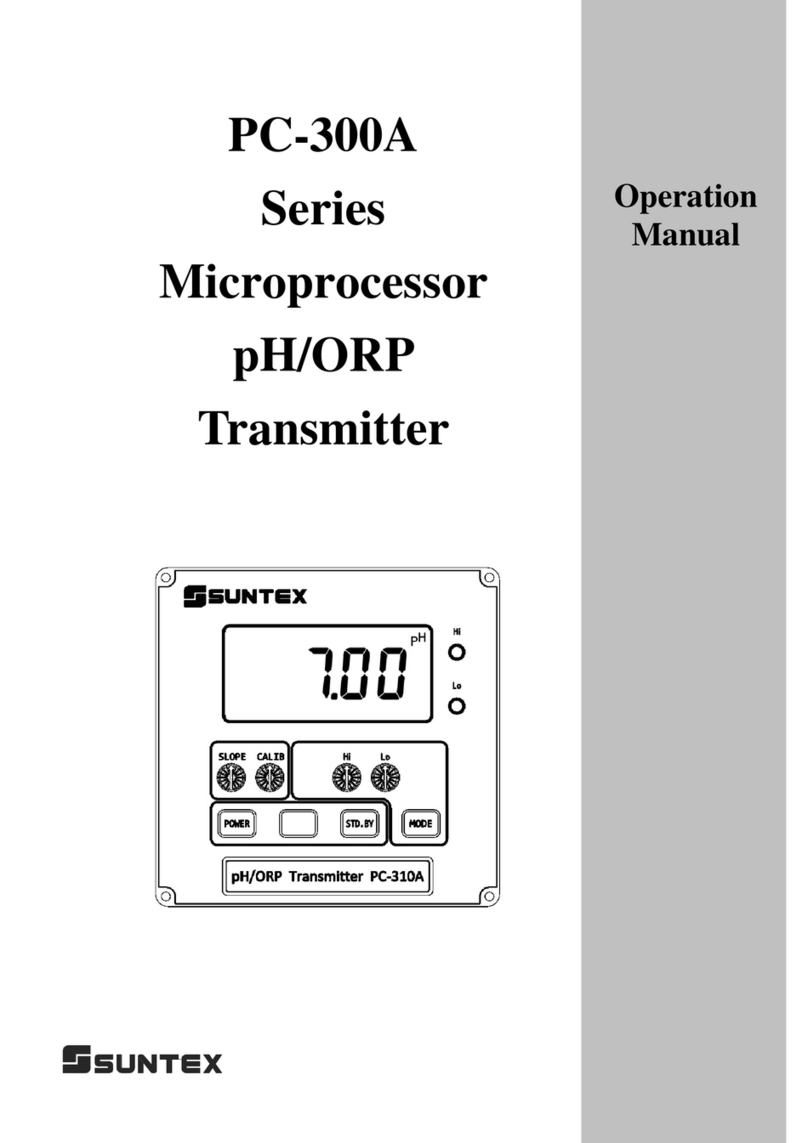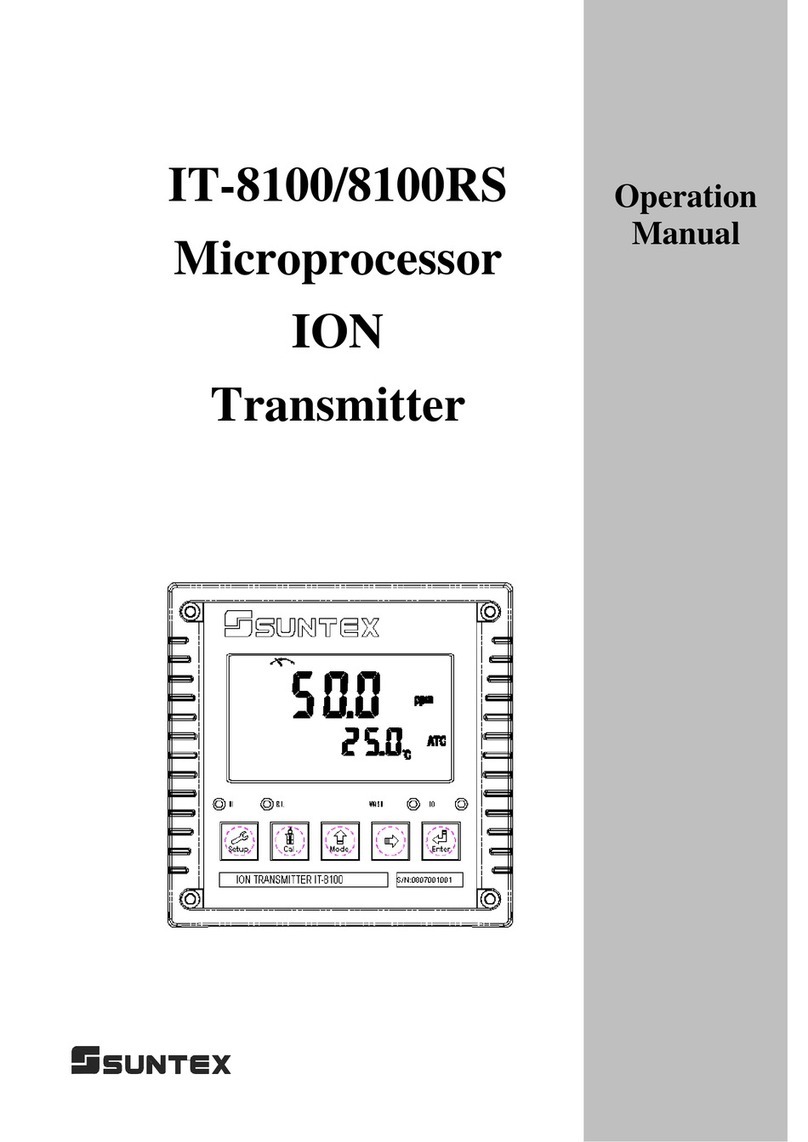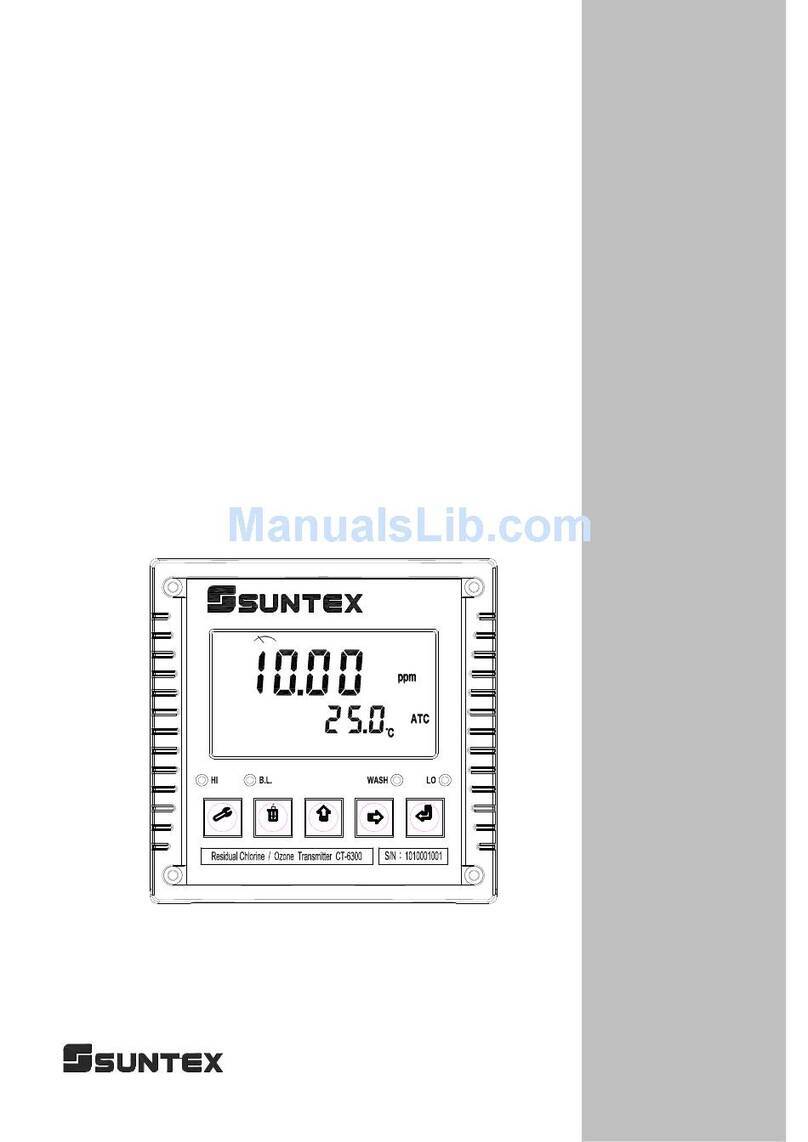
1. Specifications
Model TC-7310-RS
Measuring Mode Turbidity/Suspended Solids
Measuring Unit Turbidity: NTU, FTU, FNU
Suspended Solids: mg/l, ppm
Measuring Range
0~500 NTU (TC-500 sensor)
0~3000 NTU (TC-3000 sensor)
0~1000 ppm (TCS-1000 sensor)
Resolution
0.1 NTU (TC-500 sensor)
1 NTU (TC-3000 sensor)
0.1 ppm (TCS-1000 sensor)
Calibration Mode Turbidity or S.S. standard solution up to 5 points calibration
and calibration by factor correction
Electrode Zero Sensor internal zero point correction activation function
Ambient Temp. 0~50 °C
(Turbidity/S.S. sensor working temp.: 0~40°C)
Storage Temp. -20~70 °C
Display
Large LCM with sensor for backlight and contrast
Text mode: Numerical display
Chart mode: 3 min real-time dynamic graph
Trace mode: Programmable 3 min to 4 week trend graph
Analog Output Isolated DC 0/4~20 mA corresponding to main measurement,
Max. load 500Ω
Serial Interface Isolated RS-485 (MODBUS RTU or ASCII)
Logbook 50 events
Settings
Contact RELAY contact, 240 VAC 0.5 A Max. (recommended)
Activate Hi/Lo, Hi/Hi, Lo/Lo selectable, two limited programmable,
ON/OFF
Wash RELAY contact: ON 0~99 min 59 sec / OFF 0~999 hr 59 min
Sensor Wiper
Auto, sensor internal function for fixed 30min per wipe (TC-100
sensor), or 10 min per wipe (TC-500, TC-3000, TCS-1000 sensor)
Manual, setting from 2~29 min per wipe(TC-100), or 2~9 min per wipe
Voltage Output DC
12V
Power Supply 100 V~240 VAC ±10 %, 8W max., 50/60 Hz
Installation Wall or Pipe or Panel Mounting
Dimensions 144 mm x 144 mm x 115 mm (H×W×D), 1/2 DIN
Cut-off Dimensions 138 mm ×138 mm (H×W)
Weight 0.8 kg
Protection IP65 (NEMA 4X)
Note: The specifications are subject to change without notice.
